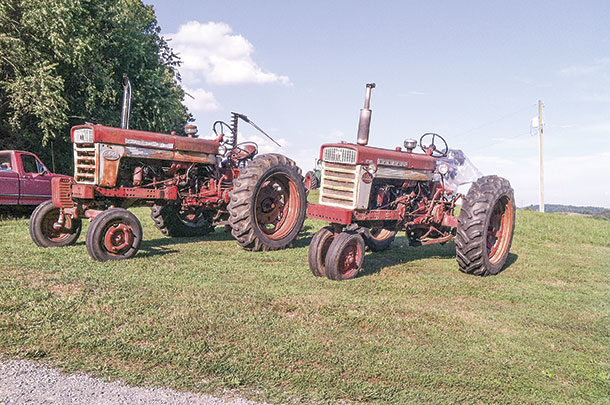OGATA was established March 31, 2008, by a few old friends in Glade Spring, Virginia, who felt there should be an organization dedicated to “preserving the past for the future” so farming history wouldn’t be forgotten. The club is a 501c3 non-profit organization with over 100 members, some from as far away as New York, Colorado and Florida.
OGATA has many tractors and pieces of equipment that have been donated or loaned to us, such as a one-owner original John Deere 95 combine from Kansas, a restored Fordson tractor from Ohio, threshing machines and grain binders, pull-type combines, a Hawk-Bilt round hay baler and a wooden horse-drawn sweep rake, just to name a few.
So if you come across any old equipment for which you no longer have a use or just don’t know what to do with, please let us know.
I like to think of our show as the biggest (and best) little show in the East. We had over 150 tractors and several vendors this year. The show is held annually on the grounds of the Fairview Homestead in Abingdon, Virgina. The original log cabin built in the 1800s has been restored with period-correct furnishings, and there are barns where we store our equipment.
There are also several acres of farmland we use to grow crops for local food banks. In 2016, we debuted a belt-driven sawmill that was donated to the club, and we were able to build a permanent shed for it on the property. This past spring, we added a covered picnic area (the Hagy Pavilion) to the grounds which provided much-needed shade as well as the opportunity to exhibit a couple of very special pieces of history.
A very good collector friend of mine brought his 1912 International Harvester (IH) AutoWagon, and we were able to display it in the pavilion. We even received a monetary donation during the show for construction of a log structure to house a blacksmith’s shop.
Let me tell you about a couple of my favorite IH Farmall tractors – the 460 and 560 models. A lot of patience led to the 460. Dad spotted it early one Sunday morning only about 8 miles from our house. It had been put out to pasture several years before, and we had no idea what kind of shape it was in, but we started the search for the owner anyway. After several years of steady persistence, we were able to buy the tractor from its original owner.
When we finally got the tractor home, we started to diagnose its issues and begin repairs. The engine was stuck but, after two new engine sleeves and a valve job, and the other common problems facing old, neglected tractors, we had it running and ready to work. I have probably used this tractor more than any other in our collection because it is so dependable and versatile.
The balanced head, belt-driven IH 100 sickle bar mower on the 460 is one of the finest mowing machines I have ever had the pleasure to use. I have used the combo of the 460 and this mower to cut many, many acres of hay and pasture around the farm.
Some sickle bar mowers – New Holland (NH) mowers designed for use on Ford tractors – are very difficult to mount and require adapters in some cases to work properly. These mowers can be mounted in just a few minutes, and you’ve already made a couple trips around the field by the time your dad has his NH mower mounted on his John Deere (sorry, Dad).
When we found this mower, it was still hooked to a Farmall H sitting in a barn where it was parked the last time it was used almost 20 years before.
The 560 came from southern Ohio, and I am its third owner. It has never been painted and is a really solid tractor. I bought it in February a couple of years ago and started using it to feed hay the very same day I brought it home.
Both of these tractors are equipped with two-point fast hitch, touch control hydraulics and the famous IH Torque Amplifier. Both of these tractors are gasoline models, but the 560 offers more horsepower than the 460. These models were available in diesel and LP gas as well.
I am very proud to be a member of an organization that is so disciplined and focused on our mission, to preserve the past for the future. By the time you receive this issue, we will have hosted over 300 high school students participating in agricultural programs in their schools.
We will demonstrate wheat threshing and horse-drawn plowing and mowing to remind the kids of what farming used to be as well as have discussions about tractor history and county extension agents, and even a Virginia state representative has requested to make a presentation to the kids. We look forward to this important event and truly hope the students leave with a greater appreciation of farming history. ![]()
PHOTO: The Farmall 460 and 560 soak up the hot July sun at Lance Phillips’ farm near Bristol, Virginia. Photo by Lance Phillips.










